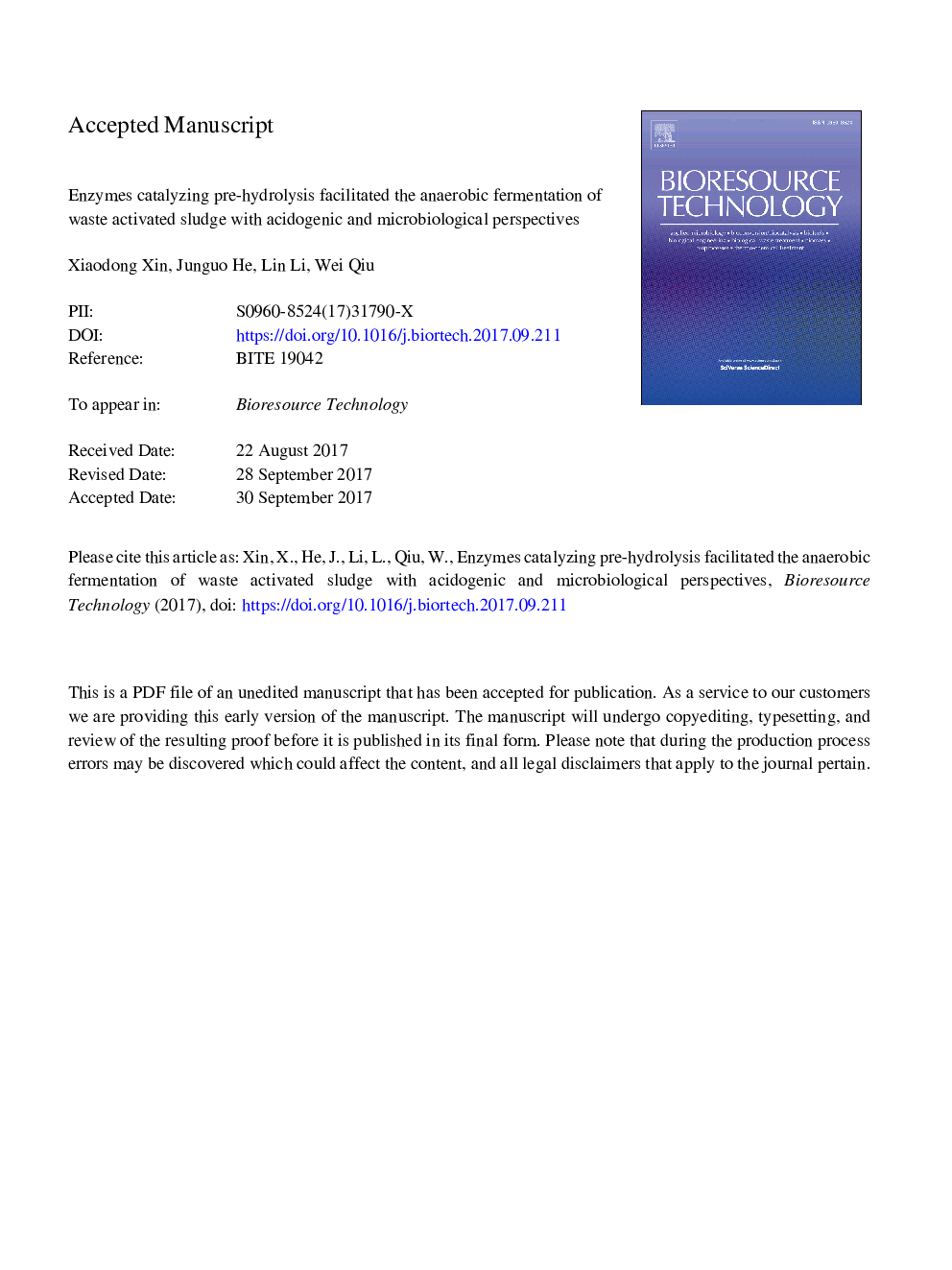| Article ID | Journal | Published Year | Pages | File Type |
|---|---|---|---|---|
| 7068671 | Bioresource Technology | 2018 | 35 Pages |
Abstract
This study investigated acidogenic and microbiological perspectives in the anaerobic fermentation (AF) of waste activated sludge (WAS) pre-hydrolyzed by enzymes catalysis. The enzymes catalysis boosted WAS biodegradability dramatically with nearly 8500â¯mg/L soluble chemical oxygen demand (SCOD) increase just within 4â¯h. The volatile fatty acids (VFAs) in the acidogenesis were accumulated effectively with over 3200â¯mgâ¯COD/L in 12â¯d, which reached 0.687â¯kWh/kg VSS electricity conversion efficiency (2.5 times higher than the control test). The fermentation process favored the compression of fermentative sludge with the distribution spread index (DSI) rising. The core populations of bacteria and archaea shifting enlarged the dissimilarity of communities at different fermentation stages. Increase of community diversity contributed to VFAs accumulation stability. Moreover, the intermediate bacterial community evenness favored VFAs accumulation potentially. The enzymes catalysis might be a promising solution for strengthening VFAs accumulation in the WAS fermentation with boosting the electricity conversion potential.
Related Topics
Physical Sciences and Engineering
Chemical Engineering
Process Chemistry and Technology
Authors
Xiaodong Xin, Junguo He, Lin Li, Wei Qiu,
